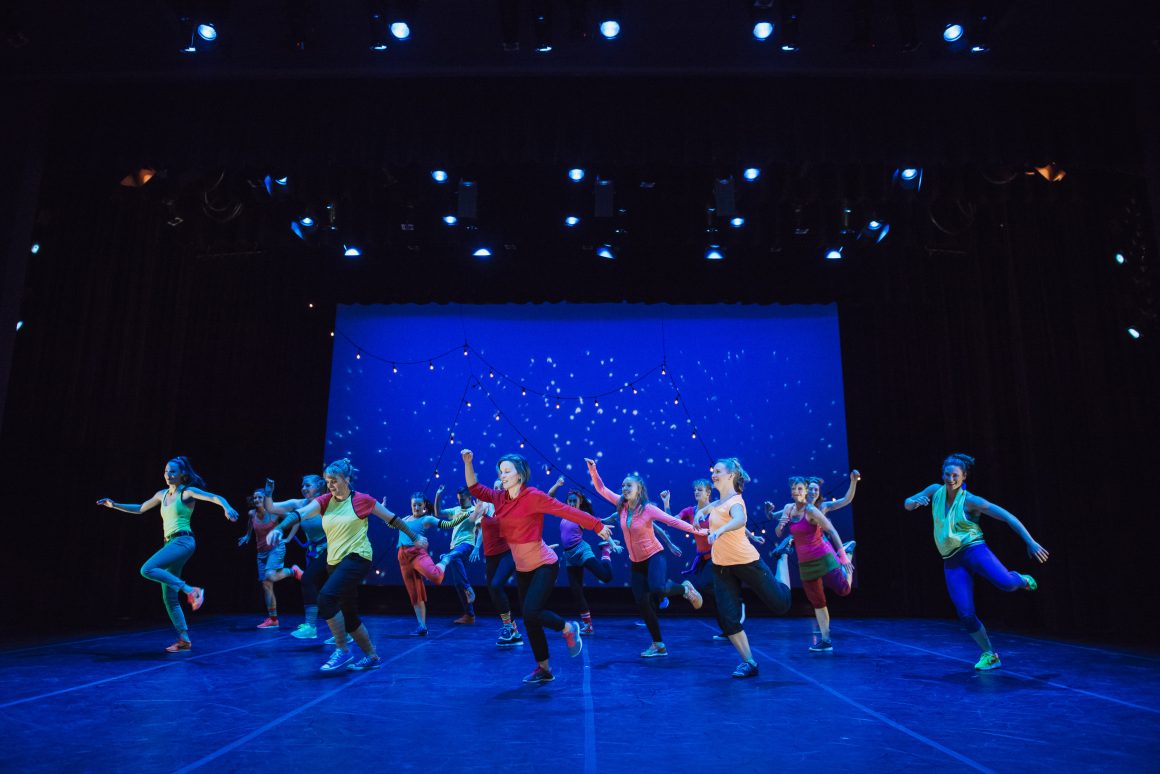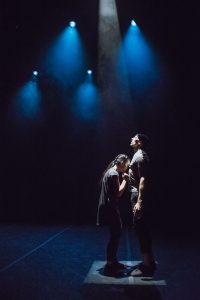
48th annual Dance Montage a successful retrospective
By Jill Girgulis, November 28 2017 —
Over 100 dancers came together for the School of Creative and Performing Arts’ (SCPA) 48th annual Dance Montage from Nov. 23–25. At the helm was artistic director Melissa Monteros, who came onstage before the show to inform audience members that the production will be moving back to the Faculty of Kinesiology starting next year.
Dance Montage began in 1968 as a production of the Faculty of Kinesiology, then called the Faculty of Physical Education, and included performances by students enrolled in modern dance classes. In 1992, the then Faculty of Fine Arts became involved via the help Monteros herself. This marked the first year a contribution from a fine arts faculty member was featured in the show, coinciding with the establishment of Alberta’s first four-year bachelor of arts dance program at the U of C. All nine performances featured in this year’s show were originally performed at a previous Dance Montage, dating back to 1992. Some of the dances even included a few of their original performers.
Dance Montage’s rich history was evident throughout the show, perhaps most notably when audience members were treated to a short video displaying snippets of each dance from when it was first performed. In addition to the current dancers featured in each work, all of the original cast members were listed in the program as another nod to Dance Montage’s past.
An impressive range of styles and techniques were on display, which served to showcase the versatility within the SCPA.  Across the nine dances, there was something for every taste. For instance, “N’Bara Ta-Gan (2008)” combined West African and contemporary influences to produce a vibrant performance, while the final dance, “Which Way To Go? (2000),” harken back to energy and styles straight from the ‘30s. “Empty Rooms (1992),” Monteros’ Dance Montage contribution from 25 years ago, demonstrated the endurance of a quality contemporary piece.
Across the nine dances, there was something for every taste. For instance, “N’Bara Ta-Gan (2008)” combined West African and contemporary influences to produce a vibrant performance, while the final dance, “Which Way To Go? (2000),” harken back to energy and styles straight from the ‘30s. “Empty Rooms (1992),” Monteros’ Dance Montage contribution from 25 years ago, demonstrated the endurance of a quality contemporary piece.
The tone varied considerably from one piece to the next. “A Slip of the Tongue (1994)” was an entertaining spin on a typical instructional video for the tango, whereas the following performance, “…and everything nice (1998),” presented a stark look at young women who started out burdened by the weight of the world but had managed to rise up by the time the final note faded to silence.
Creative use of lighting and sound enhanced the overall experience. Two performances forwent musical accompaniment in favour of the dancers themselves producing the beat. In “Air and Earth A Cappella (1997),” this decision was effective at demanding that the audience pay attention to every breath, step and movement produced by the dancers. In “The Beautiful People (2010),” technical trickery created a wall of fog that initially obscured all but three dancers from view, establishing an uneasy sensation that could be shared between the audience and the dancers.
Despite some of the routines being choreographed as long as a quarter of a century ago, present-day audiences would likely agree that they withstood the test of time.
